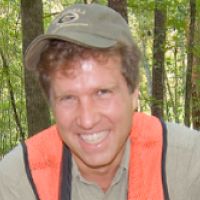Dialynas et al., 2016
Topographic variability and the influence of soil erosion on the carbon cycle
Dialynas, Y. G., S. Bastola., R. L. Bras, S. A. Billings, D. Markewitz, and D. deB. Richter (2016)
Global Biogeochemical Cycles 30(5): 644-660
-
Calhoun, Luquillo, INVESTIGATOR
-
Calhoun, Luquillo, INVESTIGATOR, COLLABORATOR
-
Calhoun, Luquillo, INVESTIGATOR
-
Calhoun, INVESTIGATOR
-
Calhoun, INVESTIGATOR
-
Calhoun, INVESTIGATOR
Abstract
Soil erosion, particularly that caused by agriculture, is closely linked to the global carbon (C) cycle. There is a wide range of contrasting global estimates of how erosion alters soil-atmosphere C exchange. This can be partly attributed to limited understanding of how geomorphology, topography, and management practices affect erosion and oxidation of soil organic C (SOC). This work presents a physically-based approach that stresses the heterogeneity at fine spatial scales of SOC erosion, SOC burial, and associated soil-atmosphere C fluxes. The Holcombe's Branch watershed, part of the Calhoun Critical Zone Observatory in South Carolina, USA is the case study used. The site has experienced some of the most serious agricultural soil erosion in North America. We use SOC content measurements from constrastins soil profiles, and estimates of SOC oxidation rates at multiple soil depths. The methodology was implemented in the tRIBS-ECO (Triangulated Irregular Network-based Real-time Integrated Basin Simulator-Erosion and Carbon Oxidation), a spatially- and depth-explicit model of SOC dynamics built within an existing coupled physically-based hydro-geomorphic model. According to observations from multiple soil profiles, about 32% of the original SOC content has been eroded in the study area. The results indicate that C erosion and its replacement exhibit significant topographic variation at relatively small scales (tens of meters). The episodic representation of SOC erosion reproduces the history of SOC erosion better than models that use an assumption of constant erosion in space and time. The net atmospheric C exchange at the study site is estimated to range range from a maximum source of 14.5 g m-2 yr-1 to a maximum sink of -18.2 g m-2 yr-1. The small-scale complexity of C erosion and burial driven by topography exerts a strong control on the landscape's capacity to serve as a C source or a sink.
Citation
Dialynas, Y. G., S. Bastola., R. L. Bras, S. A. Billings, D. Markewitz, and D. deB. Richter (2016): Topographic variability and the influence of soil erosion on the carbon cycle. Global Biogeochemical Cycles 30(5): 644-660. DOI: 10.1002/2015GB005302
 This Paper/Book acknowledges NSF CZO grant support.
This Paper/Book acknowledges NSF CZO grant support.
Explore Further






